Engaging the entire class in discussion surrounding a topic, question or problem.
Small teams of students engage in meaningful dialogue surrounding a topic, question or problem.
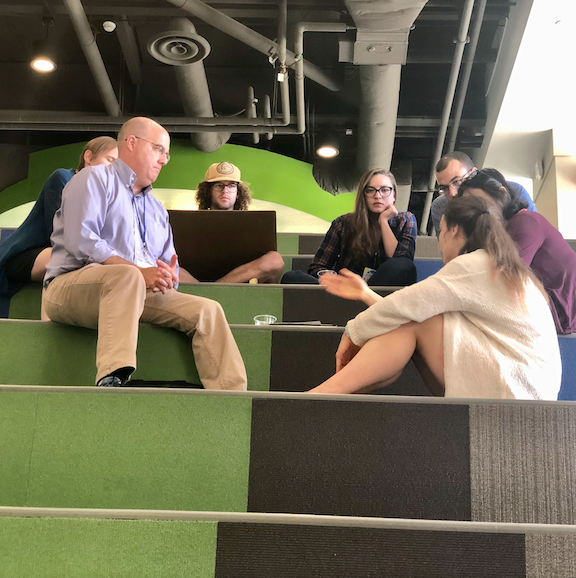 Collaborative Communication (CC)
Collaborative Communication (CC)
CC is a form of structured dialogue that is characterized by seven elements that include climate building, listening, questioning and thinking.
Large Group Discussions
Discussions can be effective even in a large class of over 100 students. However, we have suggestions for maximizing the effectiveness. First, it is helpful if the instructor and learning assistants become trained in Collaborative Communication techniques. This enables the instructor to pose open-ended questions and to ask back whenever a student asks a question. This also enables the instructor to thoughtfully call for the participation of all students and not just those who are eager to participate. A large-group discussion could be kicked off by an open-ended Poll Everywhere question. The instructor or LA could quickly note themes and then say to the entire class, “It seems as though the group is saying…What do we think about this?” This begins the discussion by first sharing the voices of all students on the topic and then allowing discussion to dig deeper into the themes.
Small Group Discussions
Small group discussions are utilized in many of the active learning modalities and are specifically discussed there. Here, we focus on the construction of diverse teams. While it can seem enticing to allow students to select their own teams, it may not be the best approach. We suggest asking students to introduce themselves and tell about themselves before the class begins. Use these introductions to assign students to purposefully diverse teams. In large classes, team sizes of 5-7 students work well. In small classes, where students are working to solve complex problems, we have found that teams of 3 are most effective (Jech, 2019).
If you are unable to thoughtfully construct diverse teams, random teams are often
fine. These can be constructed by simple ”luck of the draw”.
One of our LAMP fellows is currently embarking on research to see if student-selected
teams may be effective IF students are educated on how to thoughtfully select diverse
teammates.
Collaborative Communication (CC)
CC is a form of dialogue that enables discursive metacognition and deepened understanding of others. Through CC, individuals dialogically synthesize new connections and move learning away from a single facilitator (teacher) and towards the wisdom of the group. LAMP fellows and mentors have been trained in the Seven Aspects of Collaborative Communication by Dr. Janel Seeley. She is part of a team of scholars from the Institute for Collaborative Communication originally conceptualized by Dr. John Peters. The seven aspects of CC are: Climate Building, Questioning, Listening, Thinking, Focusing, Acting, and Facilitating.
We explore each of these elements in greater depth here.
Climate Building
Physical space can invite or disuade dialogue. Thus, we suggest creating an environment in which individuals can all see one another. In a face-to-face setting this may be a circular setting. Online, this may involve asking everyone to turn on their Zoom cameras. Things as simple as posture changes can invite participation. Ask particpants to feel free to sit back, move away from their notes and be physically ready to listen. An open mind often literally follows a physically open heart.
The second aspect of climate building is to set ground rules for dialogue. The Institute for Collaborative Communication (Table 1) offers that these ground rules might include:
- Treat everyone with legitimacy and respect
- Engage in listening carefully
- Participate actively
- Be honest and promote transparency
- Promote creativity
- Engage in a balance between inquiry and advocacy
- Assert your freedom to disagree respectfully
- Commit to the (whole) process - take responsibility for yourself, others and how you interact together
For some groups, the term "ground rules" may cause fear. Those who have long been marginalized through systems of oppression (rules) may find more comfort in a single statement of the type of compassionate climate expected. For LAMP events, we use the following: "Treat the person sitting next to you as though she/he/they have accomplished amazing things. You will never be wrong and you will certainly never be sorry."
Questioning
Often in conversations, we ask closed questions. For example, we might ask, "Don't you think that lecture was boring?" The recipient of such a question knows the askers opinion before responding and simply has to decide whether she/he/they want to agree or disagree. In Collaborative Communication, we instead work to ask open ended questions. Thus, we would rephrase the above question to, "How did you feel about that lecture?" Once the responder has had a chance to answer, that person can invite the asker to explain their reasoning for asking by inquiring, "Why do you ask?" or "What led you to ask that question?". This is called asking back.
Duirng CC sessions, when we ask open-ended questions, we attempt to do so with genuine curiosity. When one finds oneself in a climate where curiosity is not only allowed but rewarded, it begits authenticity. We find that we actually want to know about others.
Sometimes individuals come to CC in order to have a space in which it is okay to listen and not talk. However, we always invite quiet members to participate. For example, "Joe, you have been so quiet today, is there anything you would like to share?"
Listening
In CC, we listen with the possibility that our minds will be changed. This depth of listening requires suspending one's own thoughts and opinions for long enough to hold space for what others have said. In those moments of suspension, emotional responses to other's statements are likely and where possible, it is valuable to trace those emotions to their cause. This deep listening enables one to create inquisitive space that is not dominated by advocacy for one's own viewpoints. We call this listening without reloading. When reloading dominates conversations, they become what we call "popcorning" in which everyone simply wants to state their own opinion in rapid succession. "Popcorning" is rapid statements of advocacy without any true listening or suspending.
Thinking
The act of thinking during CC is a delicate balance. We work to both suspend our thoughts and to recognie them. Much like the practice of Yoga, we acknowledge our thoughts, recognize their roots and then "put the in our pockets" for later. Later might be the time when we are able to inquire of the speaker through an open-ended question. Not only do we work to recognize the roots of our own thoughts but we also work to recognize the causes of others ways of thinking and knowing. However, we try to balance this with deep listening.
Sometimes it is impossible to keep your thoughts suspended and you may find yourself "getting lost in thought" for enough time that you stop listening to the speaker. For me, this is akin to becoming so absorbed in my own footsteps that I briefly loose the sound of a nearby river despite its roar. When this happens, simply return to a mindful space and then ask the speaker to repeat him/her/themself. This can be beneficial because it can promote a space of geniune inquiry.
Focusing
Focusing is an act of 'taking the pulse' of the group. It allows everyone in the group to reflect individually and then collectively and, in doing so, to see what has been 'built in the middle'. This can be done by any facilitator who might ask, "What are we talking about?" or even, "What have we built?". When each individual reports out about what she/he/they perceive that the group is saying, they synthesize connections and may even trace conversation backwards by seven or more steps. When each person makes this synthetic contribution, the group begins to visualize what has been 'built at the middle'.
Acting
Groups and individuals generally enter into dialogue with a goal or purpose. That purpose could range from exploring solutions to complex problems to building relationships. The process of dialogue is also active. Thus, action is realized in two ways. First, it is in the process of dialogue itself. Through listening, thinking, focusing and facilitating there is a constant spiral of reflection. Second, it is in the movement of each individual and the group towards the desired action. The former fuels the latter but in a holistic way because individual goals become informed by the voices of the group.
Facilitating
Facilitation is the maintanence of attention to the process. Ideally this job is shared by every member of the group. However, when a group is learning, it is helpful to have one individual who plays this role. Maintaining attention to the process includes reminding members to ask back, helping them construct open-ended questions and recognizing when individuals are reloading. Sometimes facilitation requires what we call a "process timeout" in which the group considers only what has happened in the process of dialogue and not the topics being discussed. A facilitator could say, "I am calling a process timeout so that we can think about how that questions could be converted from a multiple choice question to an open-ended question." When a group becomes very practiced with the CC process, every member is a facilitator and there is a flow to the dialogue that is much like the flow of a great yoga practice. We call this "CC Nirvana"!
References and Resources
Institute for Collaboration Communication. (n.d.) The Seven Aspects of Collaborative Communication. University of Tennessee, Knoxville, Tennessee.
Jech, S. (2019) Qualitative Data Analysis Workshop. Action Research Network of the Americas Conference. Montreal, CA. Contact Rachel Watson (rwatson@uwyo.edu) for more about what we have found regarding team size and team science.
In this presentation, Rachel reviews the seven elements of Collaborative Communication. LAMP Mentors Christi Boggs, Monia Haslehorst and Michel Larson also share their experiences with learning this dialogic approach!

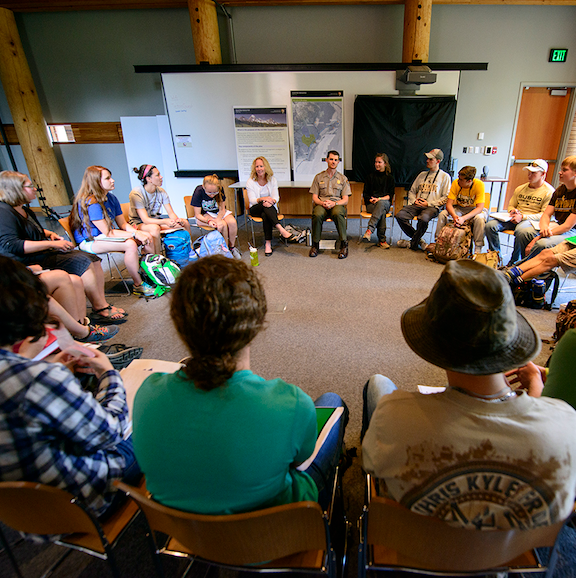 Large Group Discussions
Large Group Discussions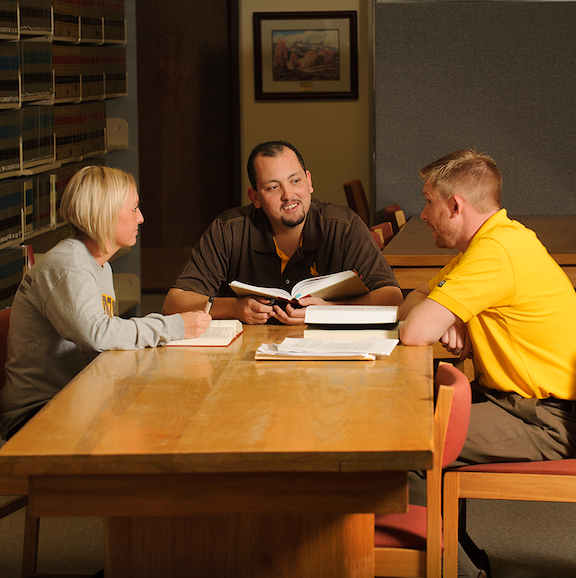 Small Group Discussions
Small Group Discussions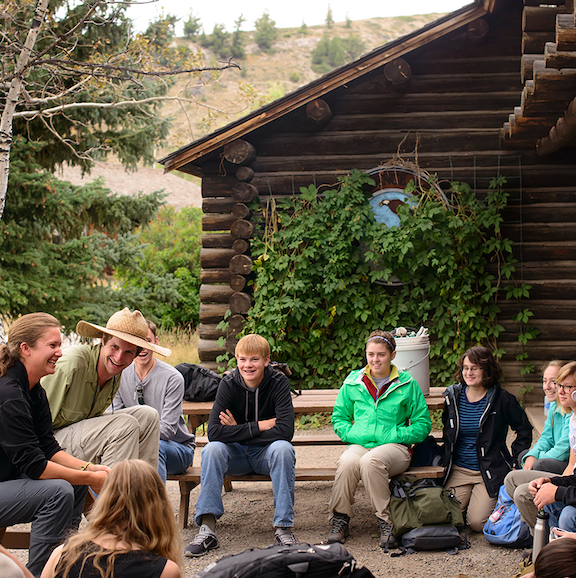 Climate Building
Climate Building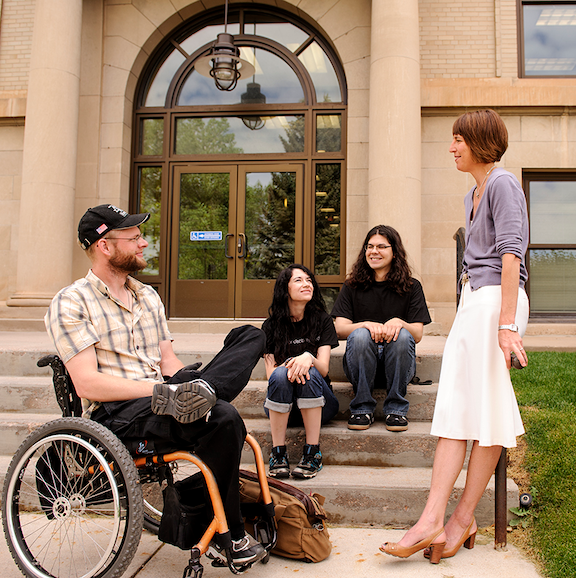 Questioning
Questioning Listening
Listening Thinking
Thinking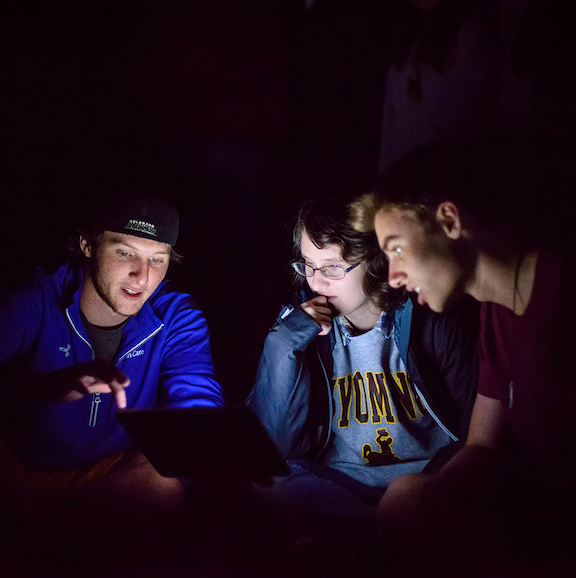 Focusing
Focusing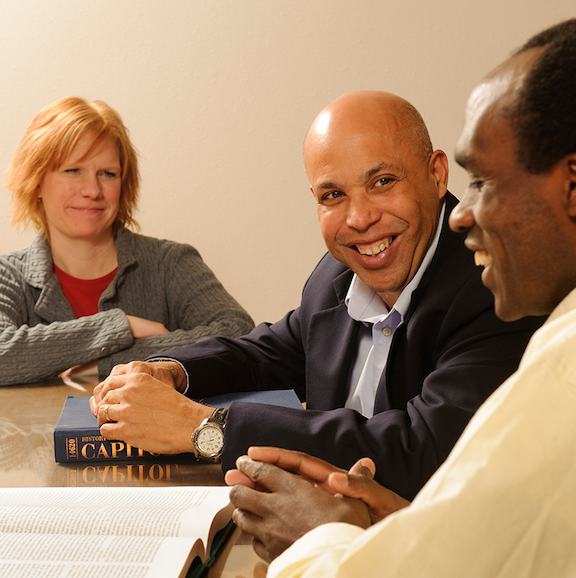 Acting
Acting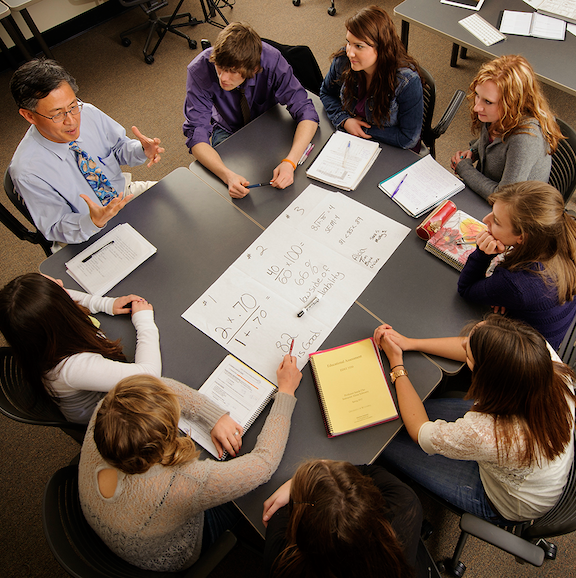 Facilitating
Facilitating